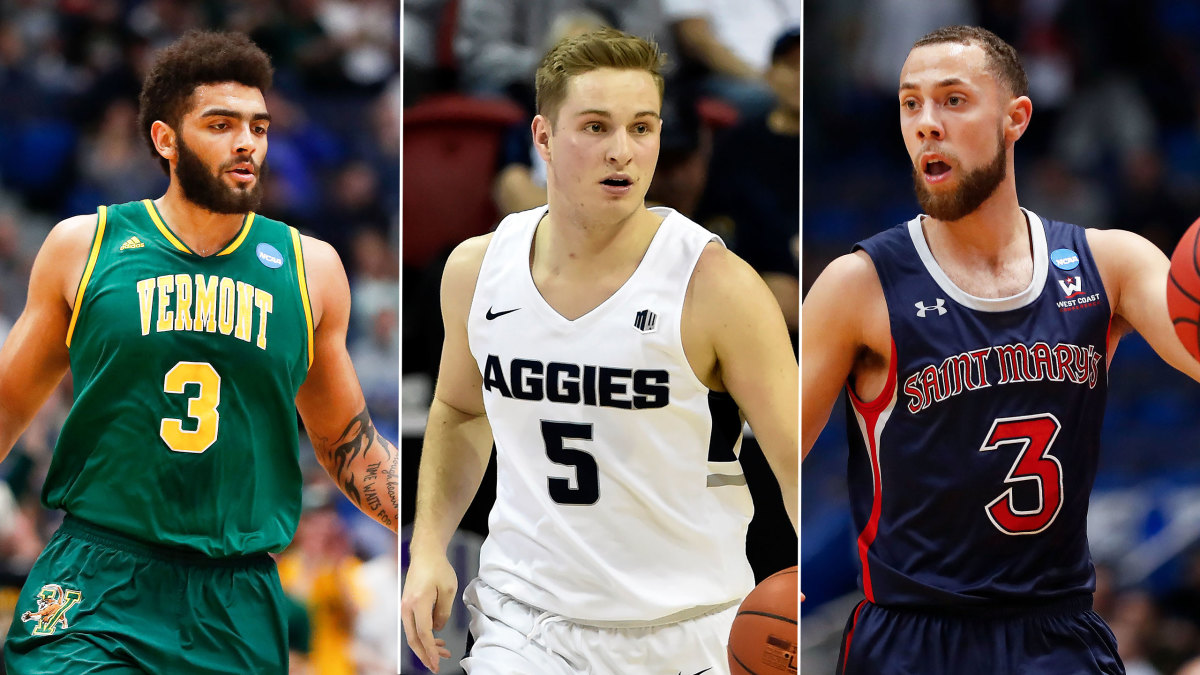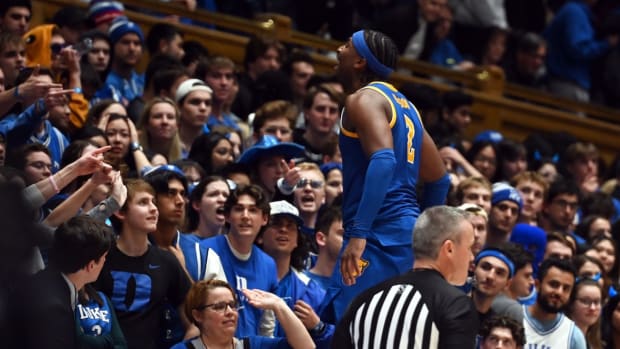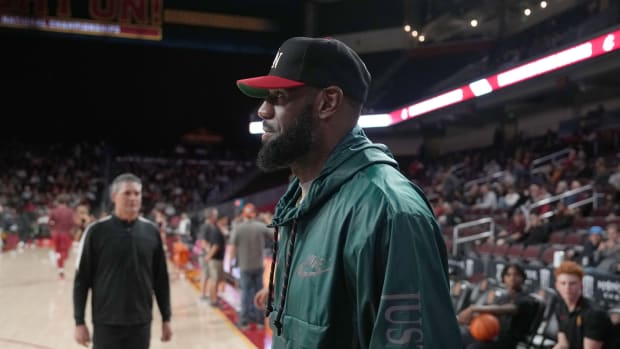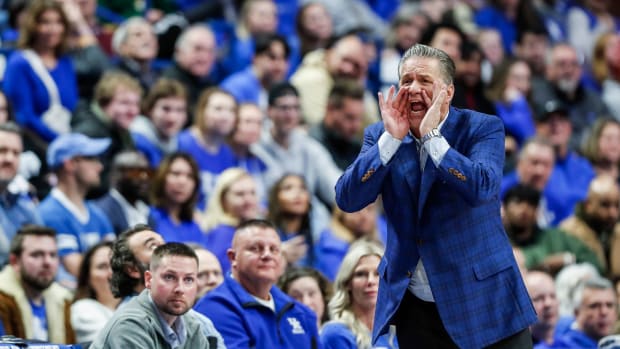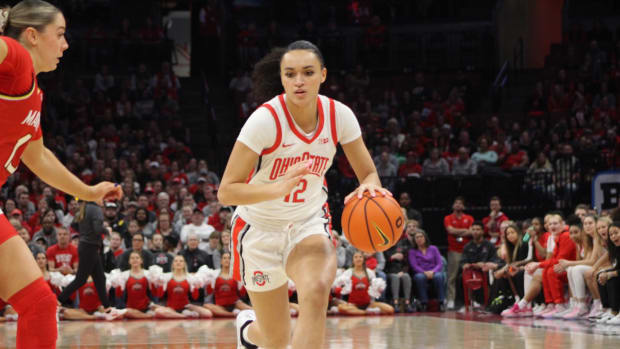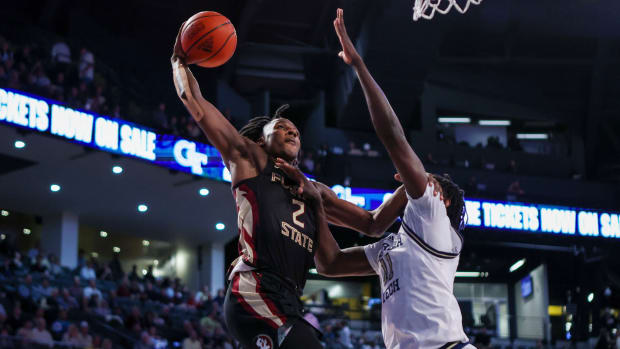Mid-Major Preview: Who Leads the Best of the Rest in College Hoops?
As part of SI.com's preview of the 2019–20 college basketball season, we're breaking down each of the seven major conferences, plus the best of the rest. We've done the AAC, ACC, Big East, Big 12, Big Ten, SEC and Pac-12; last up for our conference previews are the mid-majors (best of the rest), complete with our analyst's breakdowns of each team and a projected order of finish.
The Big Picture
Saint Mary’s fans, meet Borussia Dortmund. The German soccer club is generally regarded as one of the best teams in the world, known for developing talent that other big clubs initially ignore and respected across Europe for their tactics. And yet, they have no league titles to show for it since 2012 because they’re stuck in a league with precisely one larger, richer, more storied team: Bayern Munich.
The last time Saint Mary’s won an outright WCC title instead of the inevitable Gonzaga Bulldogs was coincidentally also 2012, though the Gaels were able to snag a WCC tournament title last year. Senior 20-point-per-game guard Jordan Ford and versatile junior forward Malik Fitts both return, along with strong third-wheel Tanner Krebs. Gonzaga, meanwhile, has to replace two first-round draft picks and its own since-graduated star senior guard. The bevy of highly-touted recruits and transfers the Bulldogs have added, led by Drew Timme and ex-Texas A&M guard Admon Gilder, should help, but this may be the year lightning strikes for the Gaels.
The most intriguing mid-major east of the Mississippi is probably Tommy Amaker’s Harvard Crimson. In 2016-17, both Bryce Aiken and Seth Towns averaged more than 14 points per game as freshmen, but injuries have knocked out Aiken (in 2017-18) and Towns (last season) in both intervening years. Now, it’s time for one last ride as seniors.
Mid-Major Player of the Year: Anthony Lamb, Vermont
While the most fun returning mid-major player is Detroit’s Antoine Davis, no one combines volume and efficiency like Vermont’s Lamb, the 2019 America East Player of the Year. Basically, the Catamounts ask Lamb to do everything on offense and he does it. Last year, Lamb led the America East with a whopping 33.7 PER. The only NBA players with a PER better than 30 last year were Giannis Antetokounmpo, James Harden and Anthony Davis, and while Lamb isn’t quite as electric as any of those three, they serve as useful comparisons for how much he dominates his competition. And he doesn’t wilt against tough opponents either, dropping 20 in the NCAA tournament against Purdue as a sophomore and 24 against Kentucky early last season.
Mid-Major Newcomer of the Year: Admon Gilder, Gonzaga
A two-year starting point guard at Texas A&M, Gilder’s second-to-last game with the Aggies was spent piloting an 86-point blitzkrieg to shock second-seeded North Carolina in the second round of the NCAA tournament. He was a steady hand for two years under Billy Kennedy, averaging 13.0 points and 3.2 assists in 61 games across his sophomore and junior years while shooting 38.5% from deep. He missed all of last season with blood clots in his right bicep, but is set to start the season as the Bulldogs’ point guard following the graduation of mainstay Josh Perkins.
Mid-Major Darkhorse Team: East Tennessee State
The Buccaneers were overshadowed as the fourth-best team in the uncharacteristically stacked Southern Conference last year, but all their more-decorated SoCon tormentors (Wofford’s Fletcher Magee and Cameron Jackson, Furman’s Matt Rafferty and UNC-Greensboro’s Francis Alonso) have graduated. East Tennessee State, on the other hand, brings back its top six scorers, led by seniors Tray Boyd and Jeromy Rodriguez. They’ll need to make improvements on defense, however, after allowing opponents to shoot 39.1% from deep, the fifth-worst three-point defense in the country.
Top 10 for 2019-20
1. Gonzaga
With apologies to Saint Mary’s, the Bulldogs have earned WCC favorite status based on numerous years of past performance. It helps that they’re bringing in several potential stars to replace their departed leaders.
As usual with Mark Few’s teams, their success will start and end in the frontcourt. Killian Tillie, the injury-plagued 6’10” senior, is theoretically back but once again temporarily sidelined, currently week-to-week after a knee surgery earlier this month. In addition to the returning Filip Petrusev (6’11”), more reinforcements have arrived in Spokane. Drew Timme (6’10”), Pavel Zakharov (6’11”) and Oumar Ballo (6’10”) are all four-star freshmen who are joined by fellow four-star forward Anton Watson (6’8”) to give Few a recruiting class that Sam Hinkie would be proud of.
That unbalanced recruitment puts even more pressure on Gilder and North Texas transfer Ryan Woolridge, who averaged 11.7 points and 4.8 assists per game for the Mean Green last season. This is basically a brand new team; three-point shooting wing Corey Kispert is the only returning player who started any games for Gonzaga last season.
2. Saint Mary’s
The Gaels sit on the other end of the spectrum, hoping their returning talent and continuity can carry them past their rivals. Jordan Ford is leading that charge. The 6’1” senior is the team’s heartbeat on both ends of the floor, but is particularly effective on offense where he averaged 21.1 points per game and shot 41.2% from deep.
Junior Malik Fitts is a proven right-hand man. In his first year after transferring from South Florida, Fitts demonstrated an improved shot from all areas of the floor (39.5% from the field to 47.5%, 33.8% from three to 40.6%, 53.8% at the line to 77.0%) and was named Second-Team All-WCC. It would be hard for Fitts to take a similar leap this season, but building a little on last year’s spectacular year could be a boon for the Gaels.
The one impact newcomer for Randy Bennett’s team could be 7’3” center Aaron Menzies, a transfer from Seattle U who averaged 11.3 points and 8.9 boards two years ago in the WAC. Logan Johnson, a backup guard at Cincinnati who applied for a waiver and is currently waiting for the NCAA to spin the wheel of eligibility for him, could also step in.
3. Utah State
On the eve of the NCAA tournament, SI christened the Aggies a “two-man band.” Well, both men are back. Sam Merrill, the 20-point-scoring guard who was one of the most efficient high-volume scorers in the country last season, returns for his senior year. His presence, along with the continued steady help of senior Diogo Brito (39.6% from deep, 1.1 steals per game, third man in the band) should give the Aggies a high floor.
The ceiling, however, will be determined by 7-foot sophomore Neemis Queta. Queta entered last season as an unknown big man from Portugal, but he exited as the Mountain West Defensive Player of the Year who blocked more than 10% of opponents’ two-point shots and altered numerous others. His defense is a lock, and the addition of 7’2” juco transfer Kuba Karwowski could give him a solid backup.
The potential expansion of Queta’s offensive game is exciting because there’s a lot of room to grow. Queta is a powerful interior force, but his 21.8% turnover rate was one of the worst in the Mountain West, and he made only 56.5% of his free throws. Last year, he was less a playmaker and more a play finisher, still a valuable skill but one that may only scratch the surface of his potential.
4. VCU
The case for VCU is easy: the Rams were good last year and basically their entire team is back. VCU is a nice case study in the idea that a team does not have to be fun to be good. The Rams were tough to watch, as they ranked 177th in offensive efficiency, per kenpom, but ranked seventh on the defensive end. The strong continuity should allow them to maintain that shutdown defense.
Rams fans can dream of offensive improvement, however unlikely it may be. Players do get better, after all. Last year, the team’s best player and offensive engine was Marcus Evans, but he wasn’t all that efficient (team-high 13.6 points on 9.8 shots with a team-high 2.7 turnovers per game). Help could come from fellow seniors and second- and third-leading scorers De’Riante Jenkins and Issac Vann, though they’re unlikely to take significant steps at this point in their careers.
Junior forward Marcos Santos-Silva had the best offensive rating on team in 2018-19 despite not attempting a single three-pointer all season. Forcing teams to respect him behind the arc could open his game. The same goes for sophomore Vince Williams, who went only 6-for-25 from deep last year as he struggled offensively.
5. Davidson
Jon Axel Gudmundsson and Kellan Grady are entertaining, creative guards who can create their shot against nearly anyone. Grady also has the benefit of Gudmundsson setting him up with 4.8 assists per game. These Wildcats are also returning a higher percentage of their points and minutes than almost anyone in the country.
But there’s no denying they disappointed to end the season. They had a shot at the A-10’s NCAA tournament auto-bid, but a disastrous loss to St. Louis in the A-10 semifinals, coupled with losses to Wake Forest, St. Joe’s, UMass and La Salle, dragged them to the NIT where they lost in the first round. If they can parlay the leadership of their numerous upperclassmen and avoid those let-downs, they should compete for the A-10 title.
The underclassman x-factor is sophomore center Luka Brajkovic. Brajkovic was a nice interior threat to complement Gudmundsson and Grady, but he had traditional freshman big man struggles, committing 4.9 fouls per 40 minutes. His top backup, Dusan Kovacevic, is the only rotation player not returning for Bob McKillop, and unless McKillop wants to go extra small with 6’6” KiShawn Pritchett at the 5 (could be fun!), Brajkovic will need to play more minutes.
6. New Mexico State
Last year’s deepest team, the Aggies now have seven seniors in their rotation from a team that nearly beat eventual Final Four participant Auburn in the first round. Point guard A.J. Harris is looking for redemption after missing two of three potentially game-winning free throws in that game. Leading scorer (at just 11.3 points per game, but still) and three-point marksman (42.0%) Terrell Brown will look to replicate those numbers as Chris Jans’s team once again should roll through the WAC.
New Mexico State went 12-deep with viable rotation players last year, which was part of why Brown’s team-leading total was so low. Four of those players have departed, which could open up a spot for juco transfer Wilfried Likayi. Likayi averaged nearly 17 points and eight rebounds for Casper College while being named Co-Player of the Year in his region. He should fit right in as one of 12 players on the roster who began his collegiate career somewhere else.
7. Dayton
This may look foolishly low for a Dayton squad that has a couple crucial returning pieces and wild-card transfers from both high and low major programs.
First, the knowns: sophomore forward Obi Toppin is really good. Toppin led the Flyers in scoring with 14.4 points per game as a freshman and was efficient too, making 67.6% of his twos and shooting better than 70% at the line while also flexing an “I’ll take it if you insist” three-point stroke and knocking down 11 of his 21 shots from behind the arc. Junior point guard Jalen Crutcher expertly balances scoring (13.1 points) with distributing (an A-10-best 5.7 assists).
Second, the new guys: the Flyers have four transfers who could contribute, though it’s unlikely all of them will. Three high-major washouts are here to re-establish themselves. Ibi Watson was a backup guard at Michigan, but after seeing only 5.2 minutes per game on the national runners-up in 2017-18, he’ll hope to see the court more in Dayton. Chase Johnson was a four-star recruit to Florida in 2017, but played just 45 minutes in a year and a half, decided midway through last season to transfer and has been granted eligibility for all of 2019-20. Big man Jordy Tshimanga struggled while starting 18 games for Nebraska in 2017-18, but could revitalize his career three states eastward.
Holding it down for the mid-majors, Rodney Chatman spent 2017-18 at Chattanooga starting 28 games and averaging more than 13 points and four assists, but the Mocs won only 10 games and went 3-15 in SoCon play. If one of these four comes up as a diamond in the rough, the Flyers could win the A-10 title. If it’s two, look out.
8. East Tennessee State
Of the seven players who played at least 50% of the available minutes for this surprisingly solid team, six are back. Not many teams brought their leading scorer off the bench, but Tray Boyd started only eight games for Steve Forbes last season and still managed to lead the team with 12.2 points per game.
Senior forward Jeromy Rodriguez was one of only 18 players in the nation to average a double double last season, but other than the 6’7” Rodriguez, the Buccaneers are really small. Boyd, at 6’4”, saw a bunch of minutes as their third-tallest player last year, while Bo Hodges (6’5”) played a decent bit at the four. Center Mladen Armus is the only contributor not returning, and his backup, 7-foot senior Lucas N’Guessan, committed 7.1 fouls per 40 last year, not exactly an encouraging rate.
The good news is that small ball is really fun, Boyd, Isaiah Tisdale, Daivien Williamson and Patrick Good have can all score, and Rodriguez has proven himself as a low-post force. Now, if they can just translate all those guards into a decent perimeter defense.
9. Vermont
Pray for America East big men playing Vermont this year. Anthony Lamb was an undersized center at 6’6”, but he still roasted them almost every night. Now, he could slide down to power forward to make room for Alabama transfer Daniel Giddens. Giddens was never an impact player at Ohio State or Alabama, but this is still a 6’11” center who was a top-60 recruit and started 18 games for an SEC team last year being dropped into a low-major conference that has a single NCAA Round of 64 win in the past decade.
Another power-conference transfer, Oklahoma State’s Duncan Demuth doesn’t quite have the pedigree of Giddens but could still be a rotation player for the Catamounts. They’ll also bring back two of the Duncan brothers, Robin and Everett, though they lose the third and best one, Ernie, to graduation. The Catamounts have long established themselves as the America East standard, and with Lamb still on board, they’re not going anywhere.
10. Harvard
Bryce Aiken! Seth Towns! Bryce Aiken and Seth Towns! Playing together again! Aiken, a 2019 All-Ivy First Team guard, playing with Towns, the 2018 Ivy League Player of the Year! (And don’t forget 2019 Ivy League Newcomer of the Year Noah Kirkwood!)
Last year, Aiken returned right after the start of conference play to lead the Crimson to a share of the Ivy League regular season title and title game loss to Yale. More than 95% of the minutes and points from that team are back this year, except now they’re also going to add the 2018 conference player of the year to the lineup.
The Crimson can only play as many as four games against power conference teams, depending on how they do at their Thanksgiving tournament in Disney World, and one of those four would be against Cal, which barely counts. Their opportunities to prove themselves will be limited. Still, they could roll through the Ivy League and enter March as a terrifying 12-seed.
